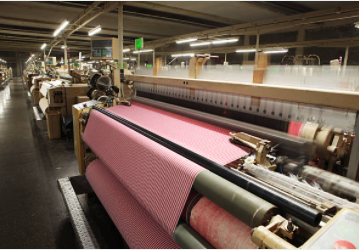

Pattern making aims to convert your ideas from a sample result to one (or many millions) of refined products. It’s an essential step in the manufacturing process for your designs as it makes cutting and designing easy with the various techniques and ensures the best fit of creative outfits for clients.
All the institutes don’t teach understanding and learning pattern making during the course’s duration. However, the JD Institute of Fashion Technology always stands upright to give all the required theoretical or practical knowledge to its students. Pattern making is an essential part of their curriculum in the fashion designing course, especially fashion technology courses, where they introduce their kids to fashion designing technology.
Drafting: Drafting is a unique way to create various patterns on paper with mechanical precision related to the different body measurements. A minimalist structure is prepared that must have a small number of darts, making the garment fit the body smoothly while being quite tight or loose. Usually, a regular brown paper that is not too thin is used for drafting. Drafting can otherwise be done on thicker paper that can be saved for future use. You can witness designers crafting patterns out of card stock that has been around for a long time.
However, a few points must be remembered during final drafting.
Draping: Draping often is alluded to by the labels – toils and modelling. But, eventually, it is the management of fabric on a three-dimensional shape by a designer to accomplish a designed fit in the best way and harmony between both the materials and the garment’s design and the individual’s silhouette.
The material or fabric is modelled around a dress stand or a physical figure to confirm the fit. With the fitting on the dress stand, the measurements are checked, marked, cut, and then sewn. While looking around, you might come across diverse dress forms in the market, but only three forms are used commonly everywhere. They are:
Wearer body measurements are taken using adhesive paper dress forms prepared by sticking adhesive tapes over a lovely fitting garment worn by the person. The lines are drawn for the centre, front, back, neck, arms, waist, and hips. The adhesive form is carefully cut through the body without causing any harm to the person’s body. The edges and joints are assessed precisely by sticking the adhesive tapes in the best way. After detaching the recordings from the dress form, they must be left to dry entirely before use.
Muslin padded dress forms are almost similar to adhesive paper ones, but the fabric differentiates them. The muslin padded dress forms are made out of muslin. The inner side of this dress form is padded, which gives it a firm look. Padding extends its life and enhances the usage of the form. You can place it on a stand while draping or preparing the desired patterns. Once done, cover the dress form with a piece of lovely fabric and use it whenever needed.
Plastic moulded dress forms are economically sold in various standardised sizes. They also come in different hand and leg dresses but are pricey. Even though they are expensive, they last for many years, but they are not meant for people with irregular shapes as it will be uncomfortable for them to wear them.
Tissue butter papers are used to generate commercial reports by the manufacturing companies for realistic body measurements. These patterns are typically labelled for 5 sizes, come packed in an envelope, and are immensely popular worldwide. The pattern names, the number of pieces to be cut, the grain, notches, cutting lines, stitching lines, darts, and fullness are all specified, along with the dress’s image as it appears on the cover. You can also find all the size, cutting, and stitching instructions mentioned. Even the dimensions of the body are listed on the surface. These instructions help choose the appropriate measures for the outfits one wishes to produce. Further, some companies also provide dress adjustments with the necessary materials, such as buttons and accessories, also stated on the cover.
Understanding the concept of pattern making is essential for those who look forward to working for their own as aspiring designers. It helps create ultimate creative and unique designs per the client’s desire. JD Institutes of Fashion Technology teaches everything regarding pattern making and its concepts. It helps the students understand the idea from an early stage and leads it further in a better way in their career as a designer.